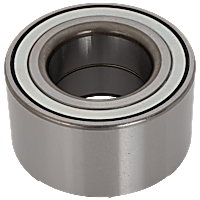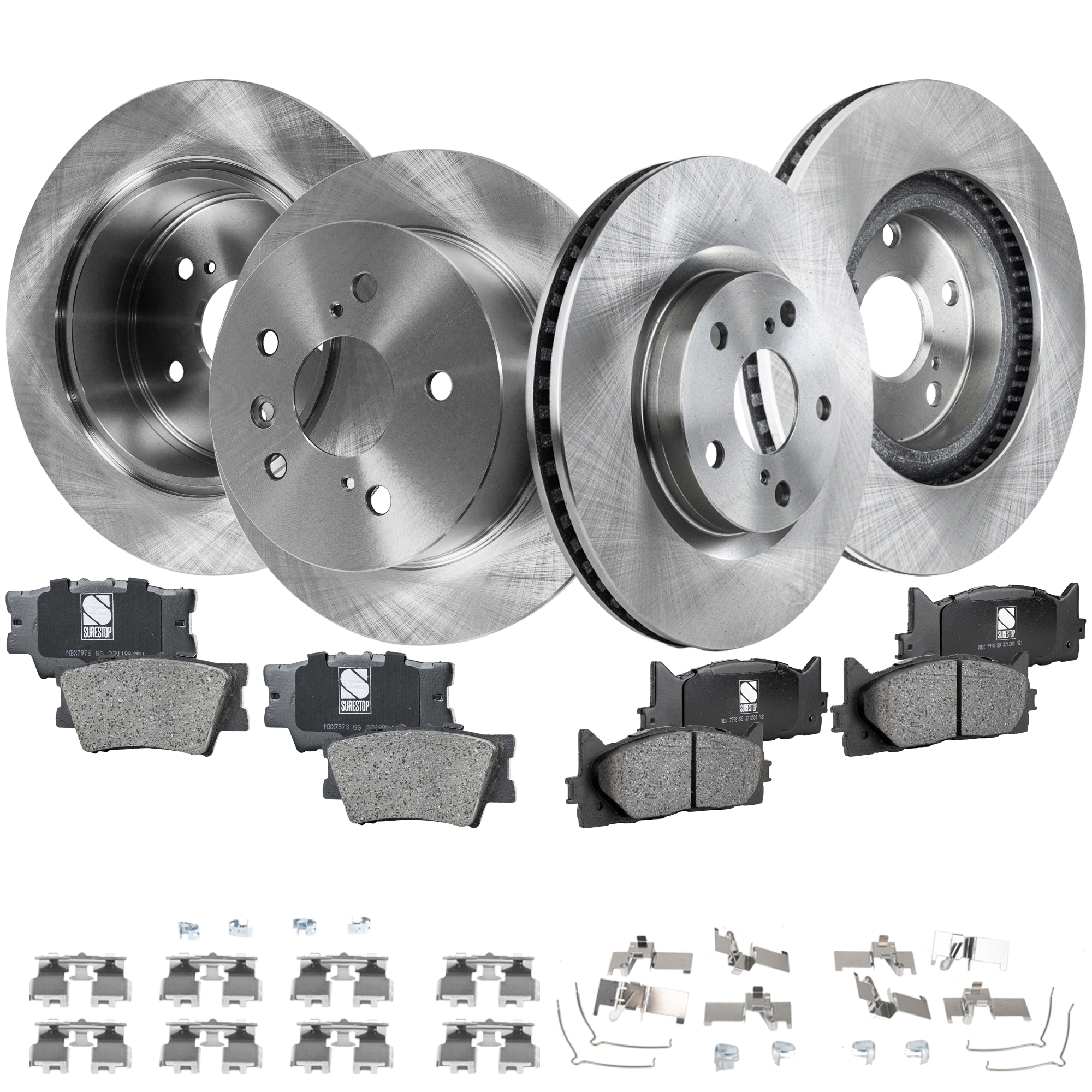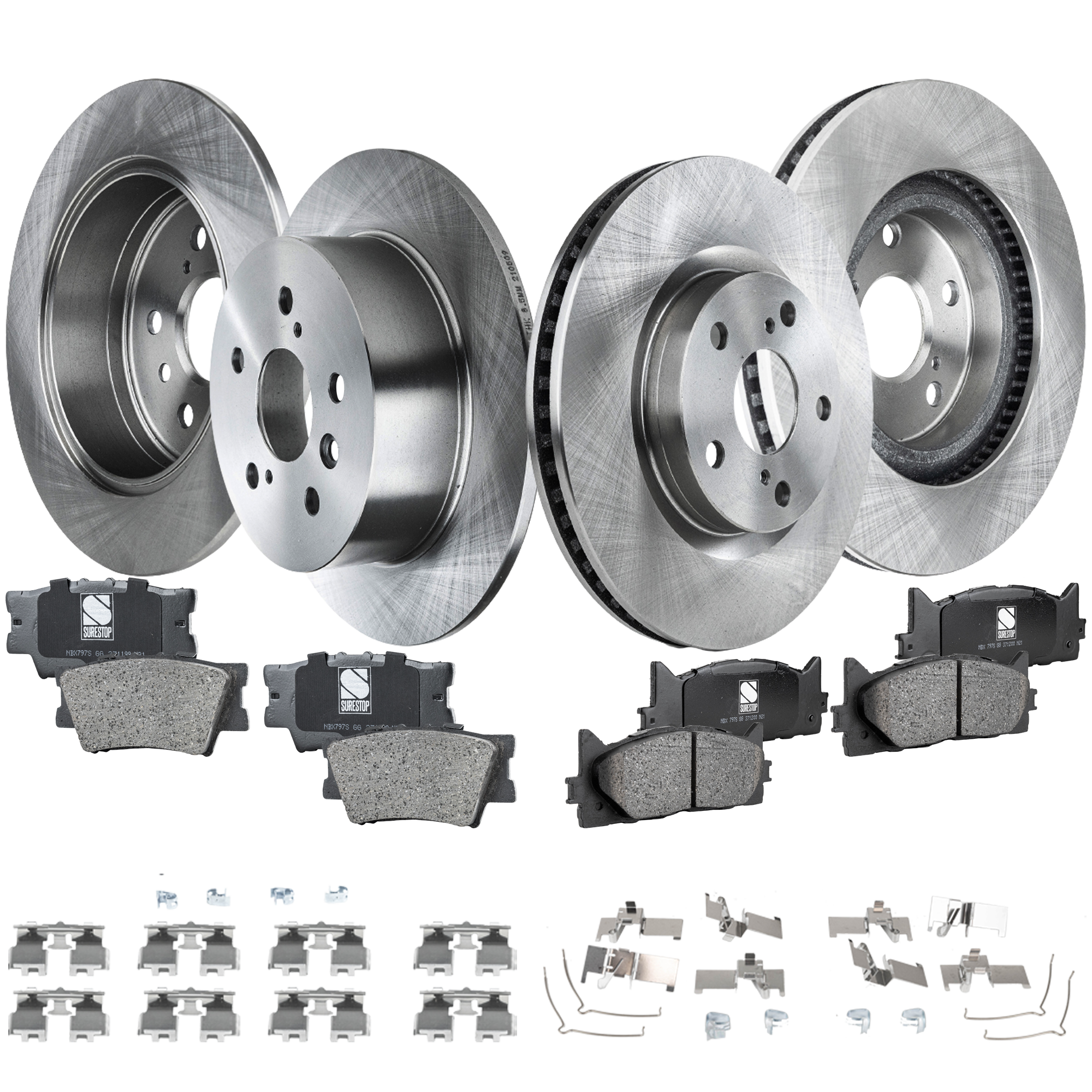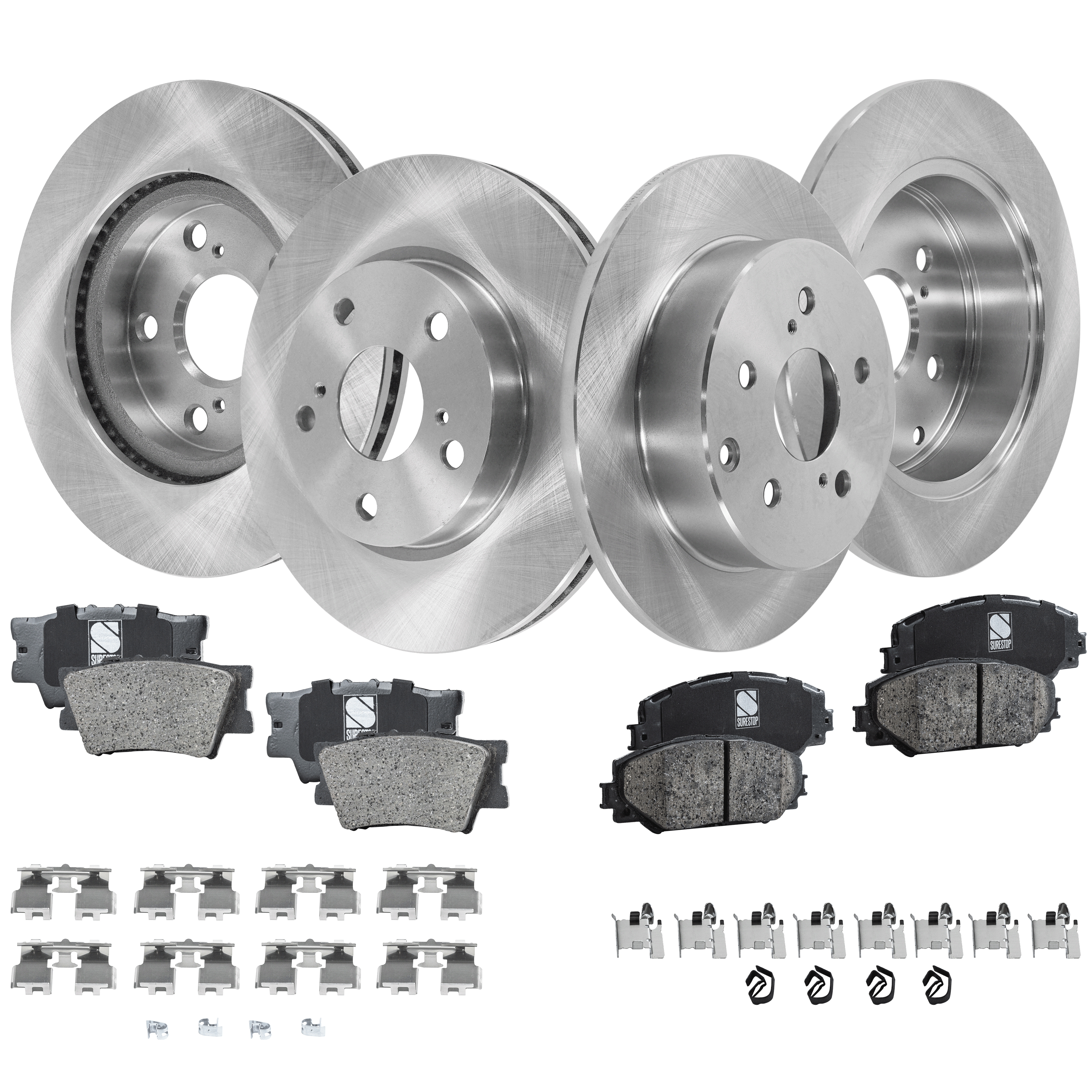The braking system is one of the most hardworking components of your car. And because it takes a lot of abuse, certain parts of the brake assembly will need to be replaced periodically.
Brake rotors, also known as brake discs, typically wear out faster due to the fact that they use friction to make the car come to a stop. When they’re starting to fail, you’ll notice telltale signs like abnormal noises or vibrations—but you should consider replacing them before these symptoms even present themselves.
What is a Brake Rotor’s Average Lifespan?
If you’re wondering how long your brake rotors are supposed to last, the answer is: it depends. On paper, brake rotors can last anywhere between 30,000 and 70,000 miles—some of them even longer than that. However, there are several factors that affect the lifespan of your rotors. These include your driving habits, atmospheric conditions, the type of vehicle you drive, and the type or quality of your rotors and pads.

Traffic conditions can also play a factor in wearing out your brake rotors. Heavy traffic means you’ll apply your brakes more often, which can contribute to faster rotor deterioration. Your typical driving speed may also play a role—the faster you drive, the hotter your rotors will get when braking.
Vehicle weight and overall load can also affect your brake rotor’s longevity. The heavier your vehicle, the harder your brakes will have to work to make it stop. External factors like mud and chemicals can also cause your rotor to wear faster than its specified lifetime.
Even if your rotors are presenting issues or nearing the end of their lifespan, this doesn’t always mean that you have to replace them immediately. In some cases, resurfacing can be an option.

Should You Resurface or Replace Your Rotors?
Rotor resurfacing is only a good idea if the disc has no cracks, major grooves, and extreme warping or rusting. Also, it should still be able to maintain the minimum thickness after being refinished. It’s best to measure rotors before machining to see how near they are to the limit. But if your rotors only have minor wearing and rusting, you can opt to resurface them. Otherwise, replacement is your safest bet and new rotors don’t cost much on some vehicles.
Resurfacing or turning is the process of removing the outer surface of the rotor through lathing. It uses a lathe machine, which “skins” the rotor’s outer surface to smooth out any irregularities.
If you feel your brakes pulsating as you come to a stop, chances are the front rotors need to be turned or replaced.

Sometimes when you drive through a cold puddle and splash that water on really hot brake rotors it can cause issues with the rotor and even create hot spots that don’t wear evenly with other parts of the rotor.
If a car is driven through a puddle and parked so that water is trapped between a pad and its rotor and the vehicle remains parked for a week or two (like at an airport), a rust patch will grow between the pad and rotor that will cause an odd brake feel, but usually that can be fixed with 80 grit sandpaper if you don’t want to have the rotors machined.
But even if you didn’t drive through water, letting a vehicle sit fallow in high humidity will cause the rotors to rust enough that brake noise is objectionable, even if the brakes have almost no miles on them. This can also be fixed with sandpaper, but you’ll need to remove the pads and sand or file them to remove embedded rust.
One brake manufacturer recommends that the rotor be washed with soap and water right after machining to remove microscopic particles that might cause noise.
Brake rotors can be resurfaced up to the specified minimum thickness, which is usually marked on the disc itself. However, it isn’t always recommended as going any thinner can reduce braking ability and increase the risk of the rotor cracking or breaking while you operate the vehicle.
Note that you can’t always look at the surface of a rotor and tell if the rotor is too thin – sometimes the rotor will look really smooth. But if you don’t resurface the rotor, some sets of brake pads may be noisy. It’s important to research the minimum thickness of any rotor before machining to make sure the rotor isn’t already too thin. Use a micrometer or caliper for accurate measurements.

When Should You Replace Your Brake Rotors?
Knowing when to replace your brake rotors is more than just relying on the standard lifespan as claimed by the manufacturer. As previously mentioned, there are other factors that can cause premature wearing. If you’re experiencing brake-related issues, have your car checked by a mechanic to find out whether you need to buy replacement rotors buy replacement rotors.
What is Brake Rotor Runout?
Brake rotors should be checked for a number of issues, including minimum thickness (as was mentioned earlier) and run-out. This is when the brake disc is distorted and, as a result, exhibits side-to-side or lateral movements of the rotor as it rotates a full 360 degrees.
When this happens, the disc will start to wobble as it rotates. This behavior causes part of the rotor to come into contact with the pads, leading to premature damage on both components as well as creating noise concerns.
Be aware, though, that sometimes lateral runout will be due to a bent hub rather than a bad rotor; it’s more common than you might think.

Rotor run-out can come from a number of issues, including worn-out wheel bearings, incorrect lug nut torque, a poor resurfacing job, manufacturing defects, and rust buildup between the hub and rotor.
Get a Replacement Brake Rotor that Fits Your Car
Driving your vehicle becomes difficult and unsafe if one of the brake rotors wears out or stops working. Not only can it cause more brake issues, it might also lead to collisions and crashes. Get your car back on the road with an affordable, high-quality replacement brake rotor from CarParts.com.
There’s a wide selection of brake rotors for many years, makes, and models to choose from at CarParts.com. You can effortlessly find the part that fits your application by entering the details of your car or truck in the easy-to-use vehicle selector and checking the search results. We also have distribution centers near you, so you’ll not have to wait long before your new part arrives at your doorstep. Furthermore, our helpful customer service team is available 24/7 to answer your questions about our products, such as their price and fit.
Replace an old or worn-out brake rotor before it breaks down completely. Check out the brake rotors at CarParts.com today!
Products Mentioned in this Guide
Shop this Project



Any information provided on this Website is for informational purposes only and is not intended to replace consultation with a professional mechanic. The accuracy and timeliness of the information may change from the time of publication.



 Brake Disc
Brake Disc
 Wheel Bearing
Wheel Bearing































